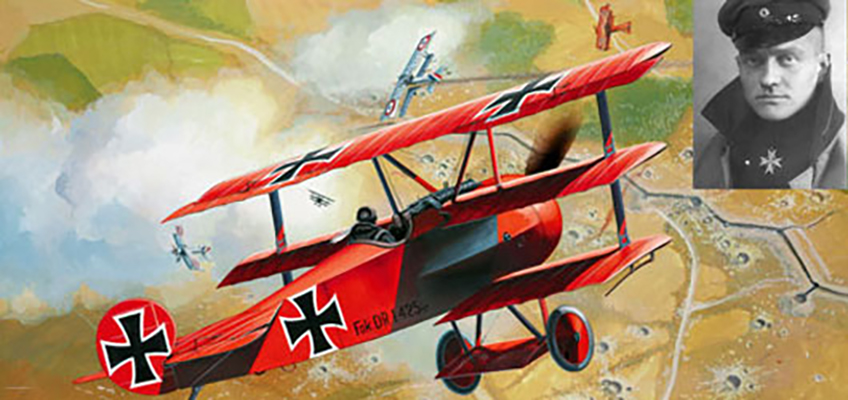Brooklyn's link to the Red Baron

Controversy has always raged over who shot down the Red Baron. Brooklyn oyster farmer Robert Buie has one of the strongest claims.
Who was the Red Baron?
Manfred von Richthofen, a German fighter pilot who was the greatest flying ace of World War One. He shot down a record 80 Allied planes.
Who was Robert Buie?
Born in 1893, Robert was a Brooklyn oyster farmer who enlisted in the Australian Army in October 1916 and sailed for France in January the following year. He served in the 53rd Battery of the 14th Brigade of the Australian Field Artillery.
What happened on 21 April, 1918?
Robert Buie was in the trenches of the Somme, manning a Lewis gun with a makeshift telescopic sight. In the skies above, the Red Baron and his “Flying Circus” of triplanes were engaged in a dogfight with fighters from the Royal Air Force.
The Red Baron was pursuing the plane of Lieutenant Wilfred May. Captain Roy Brown, a Canadian flying with the RAF, was in turn pursuing Richthofen, who in the excitement of the dogfight went dangerously low over Australian lines.
Buie later reported that the Red Baron chased May directly towards his position. As the planes approached, Buie opened fire. He reported that he hit his target at a range of 40 yards, at which point Richthofen stopped firing on May. The red triplane then passed overhead, losing speed and altitude, before crashing in a field. Nobody knew who the pilot was, but word soon reached Buie that the Red Baron had been found on board, killed by a single bullet through the chest.
Who received credit for shooting down the Red Baron?
The RAF gave credit to the pilot Roy Brown, who received a bar on his Distinguished Service Cross in recognition. Buie’s comrades, who insisted he had fired the fatal bullet, instantly discredited the decision.
What evidence is there that Buie shot the Baron down?
The most compelling argument is that the bullet’s trajectory was upwards, while Brown had been swooping down.
It should be noted, however, that some historians believe the fatal shot was fired by another Australian, a machine-gunner called Cedric Popkin, as the Red Baron manoeuvred to avoid Buie’s bullets.
Brown never strongly asserted his claim and later commented, “As far as I am concerned, I know in my own mind what happened, and the war being over, the job being done, there is nothing to be gained by arguing back and forth as to who did this and who did that.”
What became of Buie?
Buie never received any decoration or official recognition. He was recommended for a Meritorious Service Medal for saving the life of the Canadian pilot, Lieutenant May, but it was not awarded.
In August 1918 he was hospitalised with a heart condition and was medically discharged from the army. He died on Anzac Day 1964 while fishing on the Hawkesbury.
He is commemorated by a plaque in Brooklyn Park.
Is there any primary evidence?
Not as such but there is the following letter from George Barber, the medical officer who examined the body of the Red Baron, to the Australian War Historian Charles Bean:
Oct 23 1935
My dear Bean,
With reference to your letter of October 14th. asking for information.
I was inspecting this Air Force Unit and found the medical orderly washing Richthofen's body so I made an examination. There were only two bullet wounds, one of entry, one of exit of a bullet that had evidently passed through the chest and the heart. There was no wound of the head but there was considerable bruising over the right jaw, which may have been fractured. The orderly told me that the consulting surgeon of the Army had made a post-mortem in the morning and I asked how he did it, as there was no evidence. The orderly told me that the cons. surgeon used a bit of fencing wire, which he had pushed along the track of the wound through over the heart. I used the same bit of wire for the same purpose so you see the medical examination was not a thorough one and not a post mortem exam in the ordinary sense of the term. The bullet hole in the side of the plane coincided with the wound through the chest and I am sure he was shot from below while banking.
I sent a full report to General Birdwood at Australian Corps and I have often wondered what became of it.
With kind regards,
Yrs sincerely
George W. Barber







